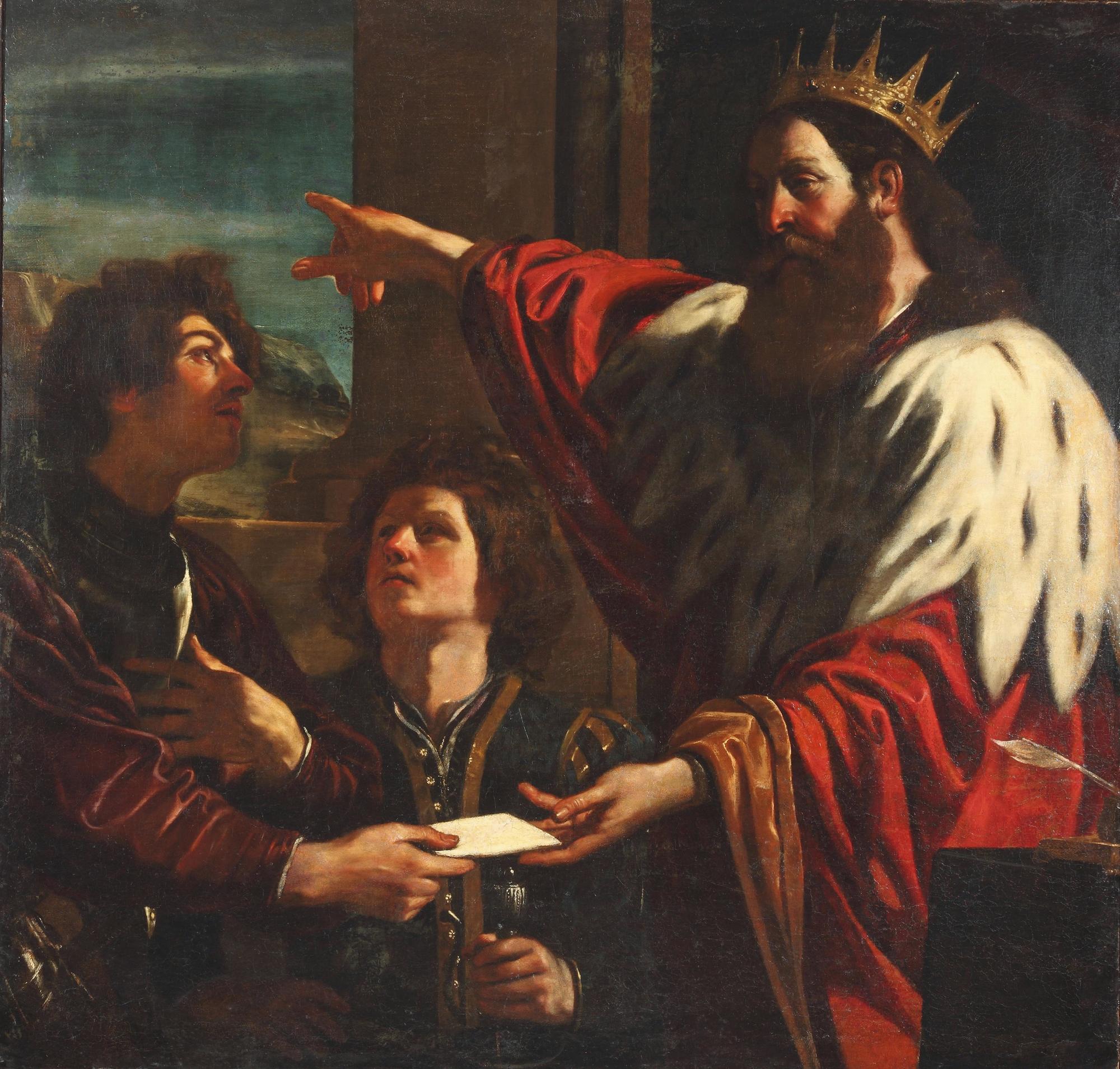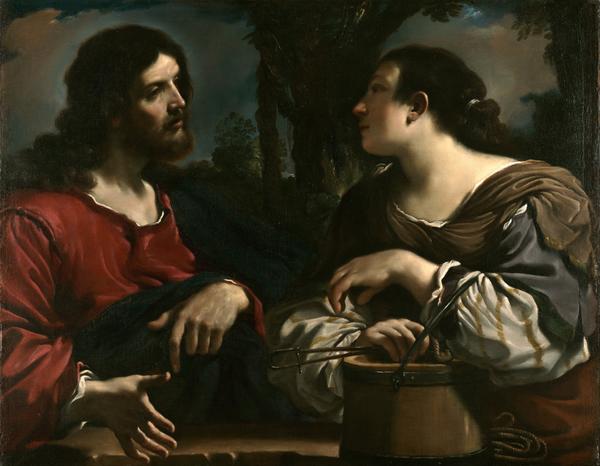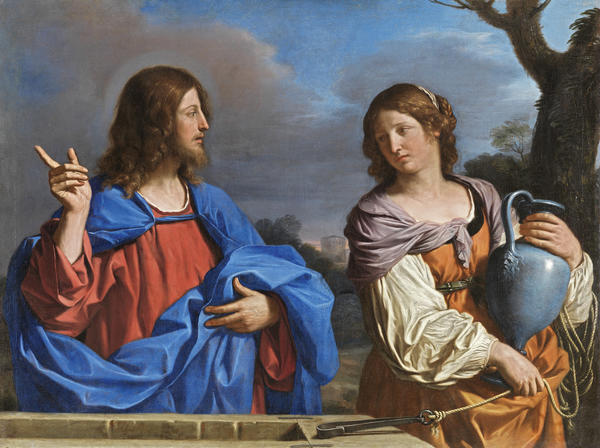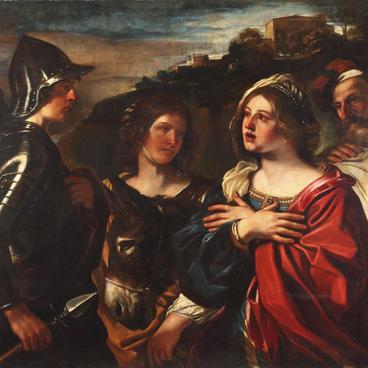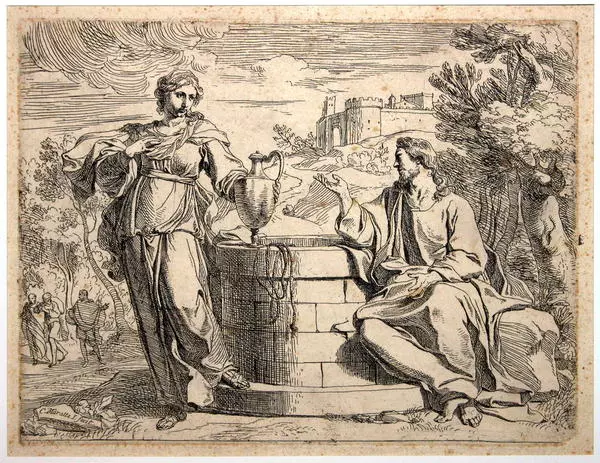The work King David Handing the Letter to Uriah was painted by Giovanni Francesco Barbieri, better known as il Guercino. The painting was created approximately in the 1620s. The artist depicted a biblical scene related to the life of King David.
King David Handing the Letter to Uriah
Время создания
the 1620s
Размер
130x135 cm
Техника
oil on canvas
Коллекция
Выставка
6
Открыть в приложении#1
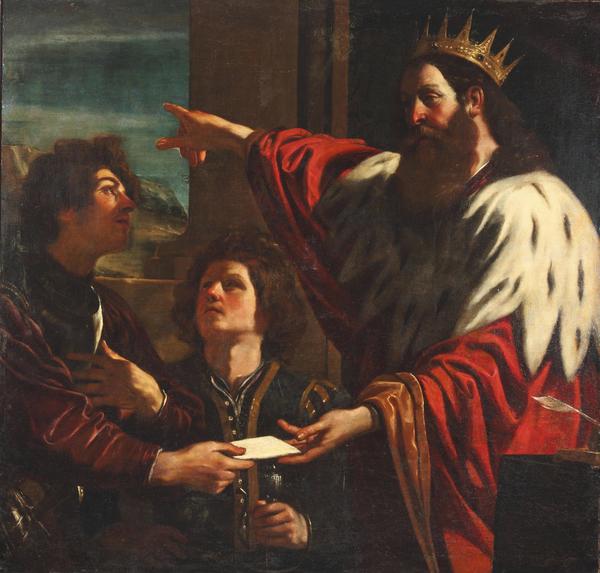
Giovanni Francesco Barbieri, Guercino
King David Handing the Letter to Uriah
#2
#3
King David fell in love with Bathsheba, wife of soldier Uriah. He seduced her while her husband was taking part in a military campaign. After the night spent with David, Bathsheba conceived. The King immediately sent for Uriah allegedly to hear a report on the battle progress. The real intention, however, was that the warrior would spend a night with his wife, and then no one would be surprised at her pregnancy. But Uriah swore he would not rest while his comrades in arms were staying at the battlefield. When King David realized there was no chance to cover up his relationship with Bathsheba, he decided to get rid of Uriah.
#4
The King wrote the following message to the commander in chief:
‘Put Uriah out in front where the fighting is the fiercest. Then withdraw from him so he will be struck down and die’.
#5
The commander obeyed. The betrayed husband died, and the King married the widow. This deed looked particularly insidious as it was Uriah himself who got the harsh massage regarding his own death from the King’s hands and brought it to the commander.The commander obeyed. The betrayed husband died, and the King married the widow. This deed looked particularly insidious as it was Uriah himself who got the harsh massage regarding his own death from the King’s hands and brought it to the commander. The moment of handing over the letter is reflected in the painting.
#6
Dark shadows contrasting with bright light emphasize the dramatic side of the plot. The characters’ gestures are also eloquent: Uriah is pressing his hand to his heart and looking straight at the King, while David is authoritatively pointing into the distance. David’s determination is acquiring a special sense here as he was in God’s favour, anointed king by Him, and David knew that he was committing a sin.
Many specialists believe that the best works of Guercino go back to his youth. His earlier works are sometimes called il vero Guercino, i.e. the true Guercino. At first, he used strong colour contrasts and intensely dramatic gestures in his paintings. In the early period, the artist was largely influenced by the Venetian school: Venetian masters admired the world’s naturalism and vigorous colourfulness.
#7
Later on, in the 1620s, the artist started gradually changing the style of painting switching to calm classical works. In his mature years, he often painted classical well-balanced compositions with more delicate contrast patterns.
#8
Christ and a Woman of Samaria, Guercino, approx. 1619.
#10
Christ and a Woman of Samaria, Guercino, approx. 1640
#9
Specialists are uncertain about the exact date of origin of the King David Handing the Letter to Uriah painting. Tentatively, the artist might have painted it after leaving for Rome in 1921, but it is not known when exactly. However, researchers stress the fact that this painting tends towards the style of il vero Guercino rather than to his later years.
#11
Yaroslavl Museum of Fine Arts
читать дальшескрыть
00:00
00:00
1x
King David Handing the Letter to Uriah
Время создания
the 1620s
Размер
130x135 cm
Техника
oil on canvas
Коллекция
Выставка
6
Открыть в приложении
Поделиться
